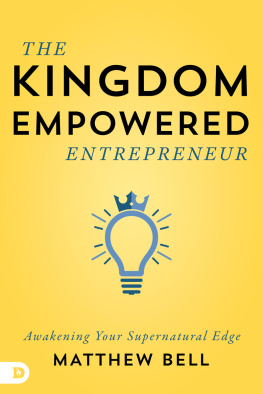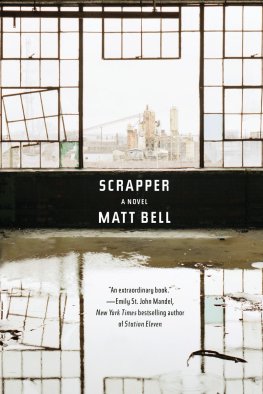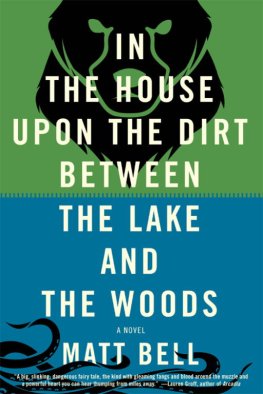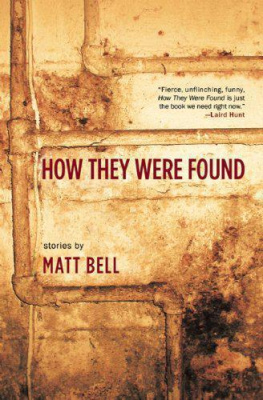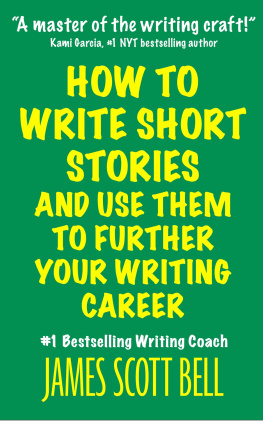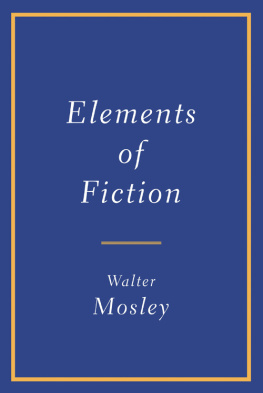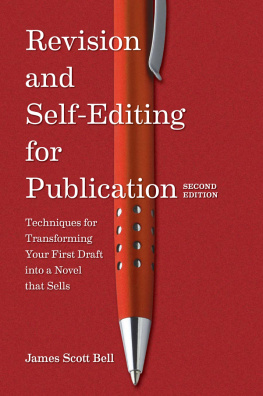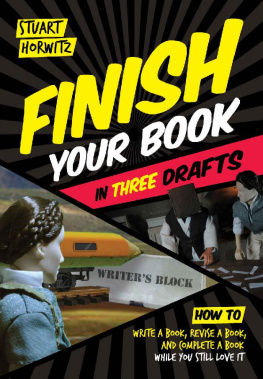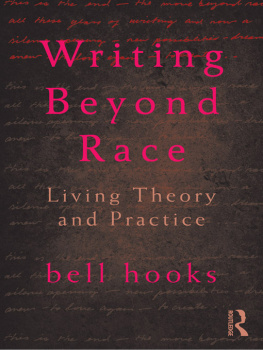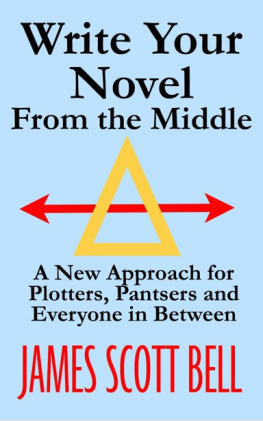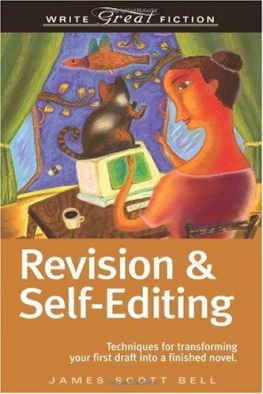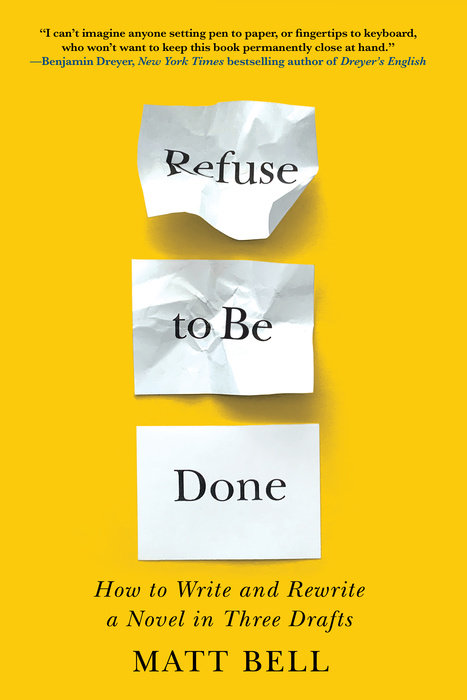Praise for Refuse to Be Done
Matt Bell reminds us that beyond inspiration lies attentiveness, craft, and revision, revision, revision. Refuse to Be Done is a guide to fiction writing so full of beautifully expressed practical advice, touching on everything from what to write, to how and when to write, that its, truly, viscerally exciting to read. Perhaps improbably, Bell is as masterly a writer about fiction as he is a writer of fiction. I cant imagine anyone setting pen to paper, or fingertips to keyboard, who wont want to keep this book permanently close at hand.
Benjamin Dreyer,
New York Times bestselling author of Dreyers English
Drawing on the wisdom of everyone from Ursula K. Le Guin to The Pixies, plus his own successes and struggles, Matt Bell has given the world a tremendously clear (but never over-prescriptive) guide to the wonderful mess of writing a novel. I want this book in my students hands yesterday; Im grateful to hold it in mine today.
Rebecca Makkai,
Pulitzer Finalist for The Great Believers
Matt Bell has written an essential, passionate guide to the art of the novel. What makes this such an excellent primer is how Bell anchors everything in writing as an act of discovery. He ties that discovery to the practice of revising and listening to your work. And he gives concrete, technical suggestions on how to do that without sacrificing sophistication and without resorting to formulas. A gift to writers at any level.
Dana Spiotta,
National Book Award Finalist for Eat the Document
Matt Bells brilliant Refuse to Be Done offers writers and writing teachers everywhere a clear guide to a process that seems daunting to me still: how to organize the writing and revision of a novel? How to avoid having 740 drafts labeled final? How to make a best effort and let it fly? Theres so much art in this, and so much art will come of it. Essential for newbies and old hands alike.
Alexander Chee, Whiting Awardwinning
author of How to Write an Autobiographical Novel
This is the CrossFit of craft books, a literary piece of gym equipment that will help you progress dynamically through your creative projects with agency, clear-sightedness, and a new appreciation for the often overlooked, but utterly essential actand artof revision. Refuse to Be Done is a must-have for the writer who is ready to up their writing game.
Courtney Maum, author of Before and After the
Book Deal: A Writers Guide to Finishing,
Publishing, Promoting and Surviving Your First Book
Refuse to Be Done isnt merely a book on how to write a novel, its also a book on how to be a writer, how to think like a person whose book will be on a shelf. We used to be told to kill our darlings, but I dont think thats true anymore, not after reading Matts excellent advice. If we do as he tells us, our darlings might just grow up and move out on their own, never to bother us again... until the next time we find ourselves staring at that blank page. A book perfect for the newcomer or the seasoned author who needs a fresh way to look at the novel.
Tod Goldberg, New York Times
bestselling author of Gangsterland
Also by matt bell
In the House upon the Dirt Between the Lake and the Woods
Baldurs Gate II
Scrapper
A Tree or a Person or a Wall
Appleseed
Copyright 2022 by Matt Bell
All rights reserved.
Published by
Soho Press, Inc.
227 W 17th Street
New York, NY 10011
Library of Congress Cataloging-in-Publication Data
Names: Bell, Matt, author.
Title: Refuse to be done : how to write
and rewrite a novel in three drafts / Matt Bell.
Description: New York : Soho, [2022]
Identifiers: LCCN 2021046774
ISBN 978-1-64129-341-9
eISBN 978-1-64129-342-6
Subjects: LCSH: FictionAuthorship. | FictionTechnique.
Classification: LCC PN3365 .B46 2022 | DDC 808.3dc23/eng/20211006
LC record available at https://lccn.loc.gov/2021046774
Interior design by Janine Agro, Soho Press, Inc.
Printed in the United States of America
10 9 8 7 6 5 4 3 2 1
To Anne Valente, Callista Buchen, Dustin M. Hoffman,
Gregory Howard, and Joseph Scapellato, with thanks
Writing a novel is kind of like scaling Mt. Everest and passing by your own bones on the way.
Karen Russell
Introduction:
The Three Drafts
You are writing a novel. You are writing a book.
Go ahead and tell yourself. And then tell yourself again.
Maybe say it a few more times, for luck.
No matter what phase in the process youre in when you read this pagewhether youre already laboring on your novel, whether youve not yet written a wordI implore you to continually affirm that you are writing a novel, that you are writing a book. Dont diminish, dont equivocate, dont find some way to keep from claiming the work.
If only to yourself, if only in the tiniest whisper, say it: I am writing a novel .
If its the first time youve ever said this to yourself, I hope it feels good. If youve been saying it for years already, I hope its a rededication of your commitment to a pursuit to which youve likely already dedicated many long hours. But what is it that youre doing, exactly, when youre writing a novel, filling the hours spent at your desk? Maybe your focus is on telling a gripping story, or bringing great characters to life, or plotting intricate mysteries, or inventing new worlds, or exploring family dramas, or capturing the stream-of-consciousness thoughts of one particular person as precisely as possible. Whatever your primary aim is for your novel, it doesnt on its own tell you what the task of going from the empty page to a finished manuscript will look like, in practical terms.
This book is one attempt to fill in that blank, by offering actionable steps for every phase of the process as it applies to many of the kinds of novels being written and published today.
Samuel R. Delany once said that eighty-five to ninety-five percent of my work is rewriting and revision. Thats been my experience, too, although I didnt always recognize it. As a student, I took years of creative writing workshops, and in most of those workshops, I was required to turn in an end-of-the-semester revision, demonstrating how Id worked with the feedback Id received from my classmates and my teachers. But requiring students to revise isnt the same as teaching students how to do it . In the absence of strategy, I relied on brute repetition to improve my stories: I wrote draft after draft, covering printed pages in red ink before returning to the computer to input countless changes I was never sure were necessarily improvements.
Given sufficient time and a lot of effort, I was able to bully many of my rough drafts into respectable submissions and, then, with the help of kind editors, into readable stories capable of being printed in magazines and books. But when I started writing novels, I realized that as hard as short stories had been to revise, rewriting a novel draft of three hundred pages or so was far more dauntingand that wouldve been the case even if my first novel draft hadnt come out more broken than my average short story.
Over the years, Ive come to believe that revision and rewriting are most of what good writing entails: writing a successful book isnt only making the most of the first burst of inspiration, as pleasurable as that is. Its also the sustained and often small-scale work of making a promising manuscript better hour by hour, day by day, slowly but steadily moving it closer to your imagined ideal. So, while this is theoretically a book about revision, its also a step-by-step guide to writing a noveland because I believe rewriting and revision necessarily occur at every stage of the process, Ive organized this guide into three large chapters, each devoted to one of what I think of as the three drafts.



